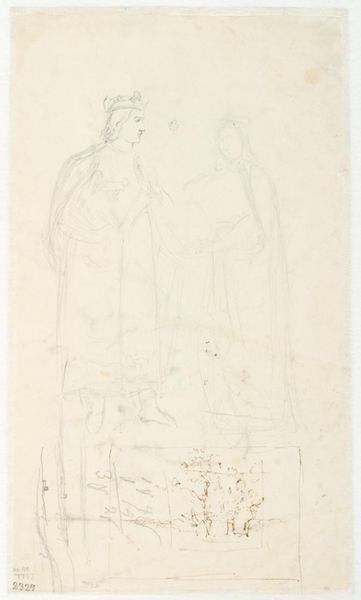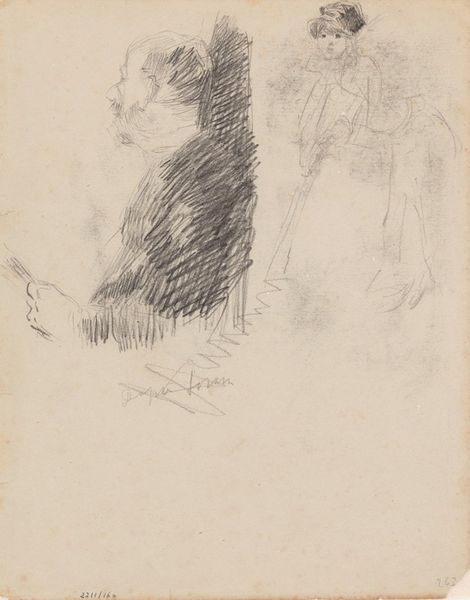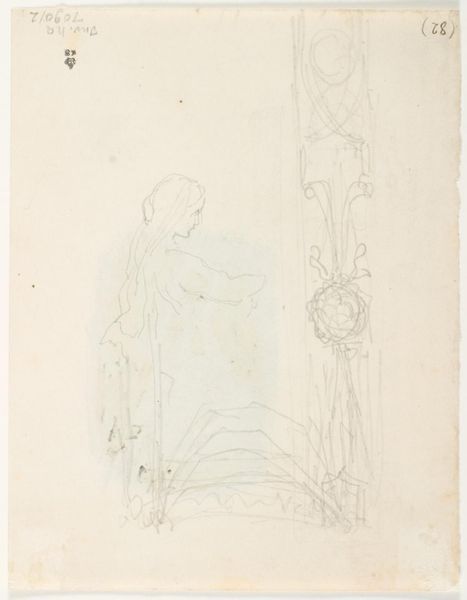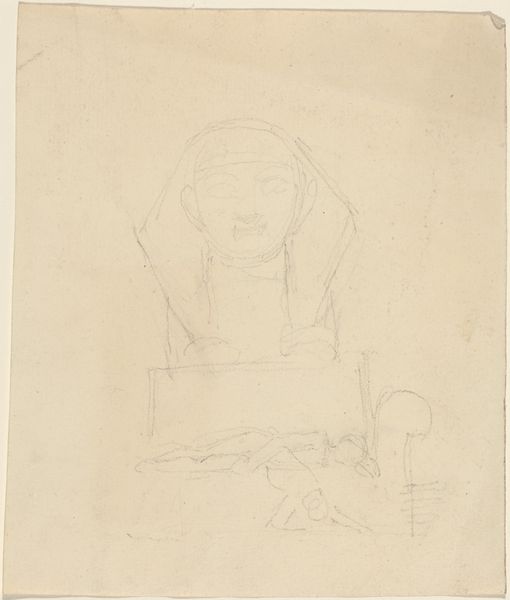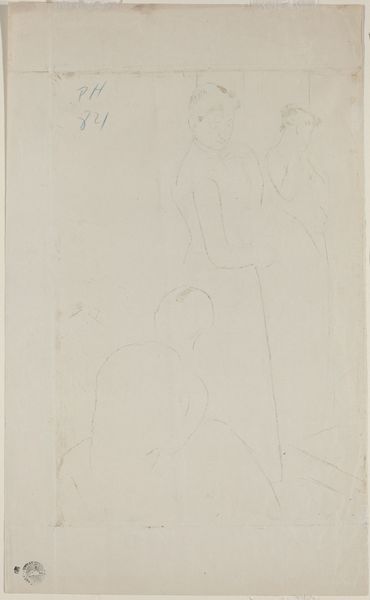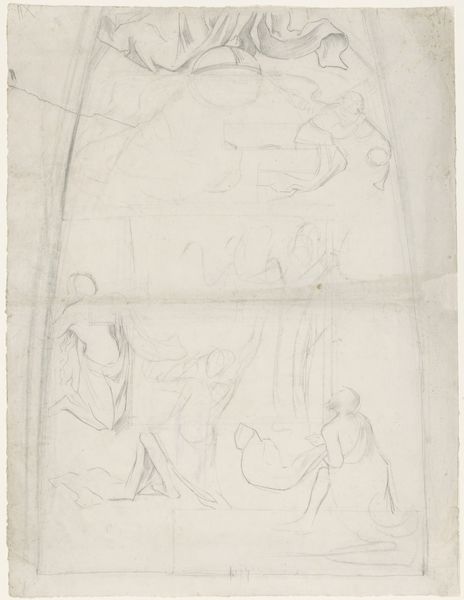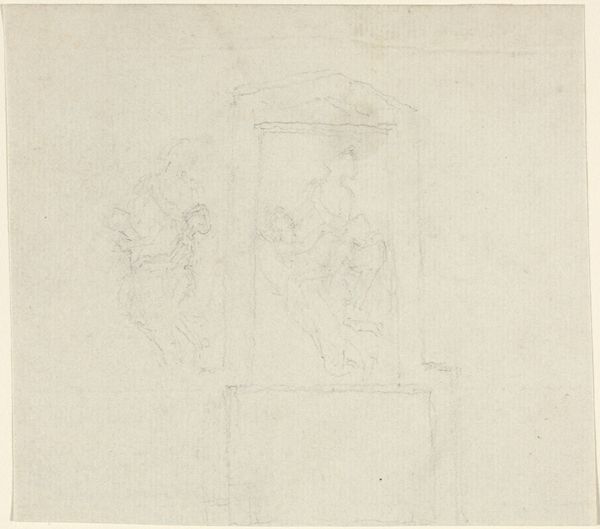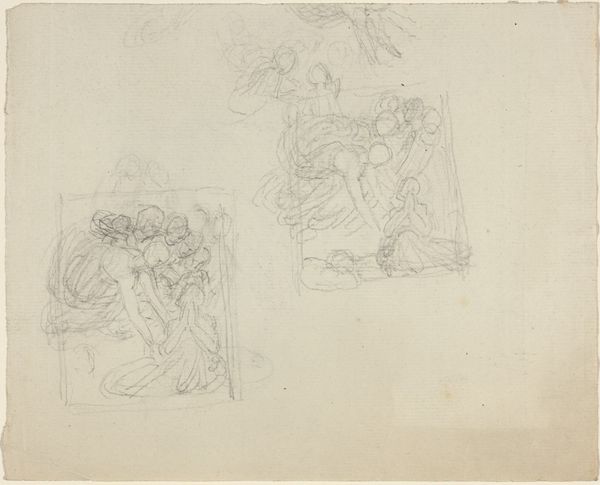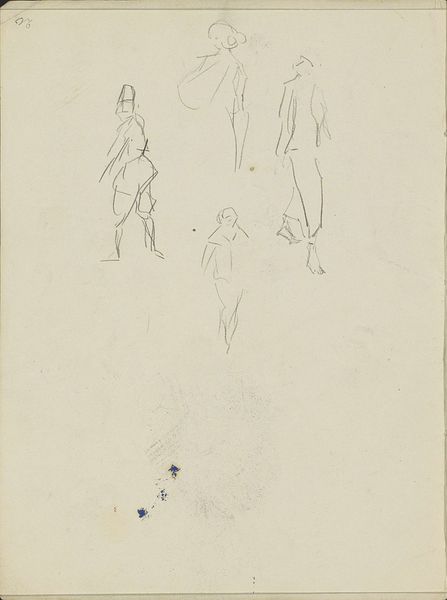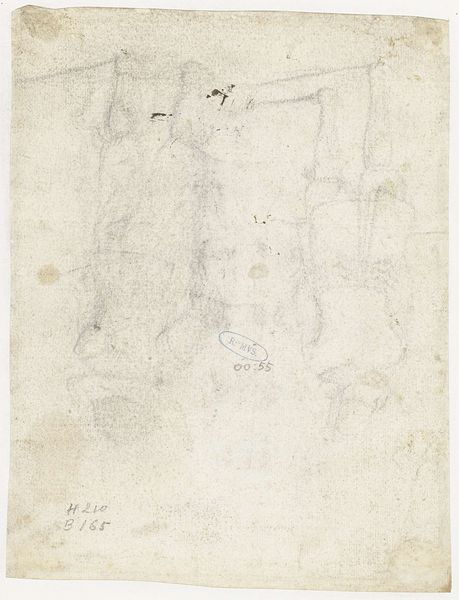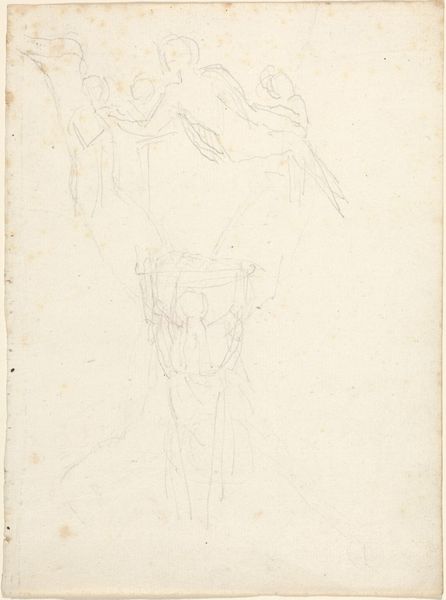![Designs for a Monument [recto and verso] by John Flaxman](/_next/image?url=https%3A%2F%2Fd2w8kbdekdi1gv.cloudfront.net%2FeyJidWNrZXQiOiAiYXJ0ZXJhLWltYWdlcy1idWNrZXQiLCAia2V5IjogImFydHdvcmtzL2IzYmM5YjBkLTJjMGMtNDAwZC04OTllLTgyODkwN2Y5YmMzMS9iM2JjOWIwZC0yYzBjLTQwMGQtODk5ZS04Mjg5MDdmOWJjMzFfZnVsbC5qcGciLCAiZWRpdHMiOiB7InJlc2l6ZSI6IHsid2lkdGgiOiAxOTIwLCAiaGVpZ2h0IjogMTkyMCwgImZpdCI6ICJpbnNpZGUifX19&w=3840&q=75)
drawing, pencil
#
drawing
#
figuration
#
pencil
#
history-painting
#
academic-art
Dimensions: overall: 22.6 x 18.6 cm (8 7/8 x 7 5/16 in.)
Copyright: National Gallery of Art: CC0 1.0
Editor: This is John Flaxman's "Designs for a Monument," created with pencil. It has this very preliminary feel, like we're looking at the artist's first thoughts. What stands out to you when you look at this piece? Curator: The roughness, the sketch-like quality you mentioned, is precisely where I'd begin. Think about monuments, right? They’re typically about permanence, grand materials, a sense of immutable power. But here, Flaxman gives us pencil on paper, a fragile, easily erased medium. What does that say about the intended monument itself, its potential commissioner, and Flaxman's relationship to both? Editor: I see your point! So it's not just the imagery of the figures, but the way it's made? The… labor, maybe? Curator: Exactly! Consider the physical act of drawing – the repeated strokes, the pressure applied to the pencil. Flaxman is mediating between the grand gesture of memorializing an individual, or perhaps an event, and the very humble process of applying graphite to paper. And this wasn't fine paper made from cotton, either - linen rag paper was rougher and more typical. What does that cheap material suggest about the social context? Who was this memorial for, if the materials were inexpensive? Editor: Perhaps a commoner, not royalty? So, the medium suggests something about class and consumption, even though it depicts what seems to be religious figures? Curator: Precisely. Flaxman's choice to render designs for a monument in such an ephemeral manner really compels us to consider the relationship between artistic production, social class, and the act of commemoration itself. This material approach deconstructs traditional assumptions about permanence. Editor: That’s a fascinating way to look at it. I was focused on what the figures represented, but understanding the material process really changes my interpretation. Thanks for pointing that out! Curator: My pleasure! Considering artistic intention, materiality, and execution reveals a lot about this artwork.
Comments
No comments
Be the first to comment and join the conversation on the ultimate creative platform.
